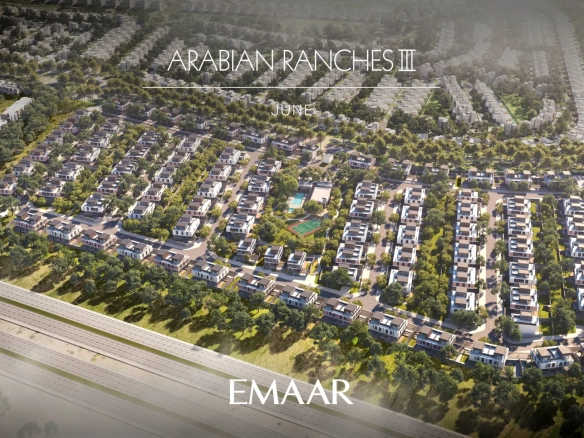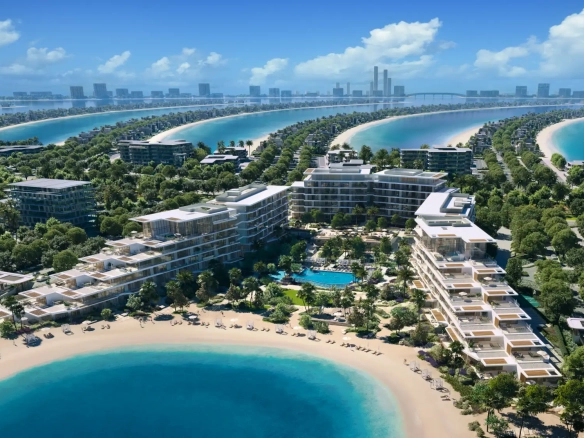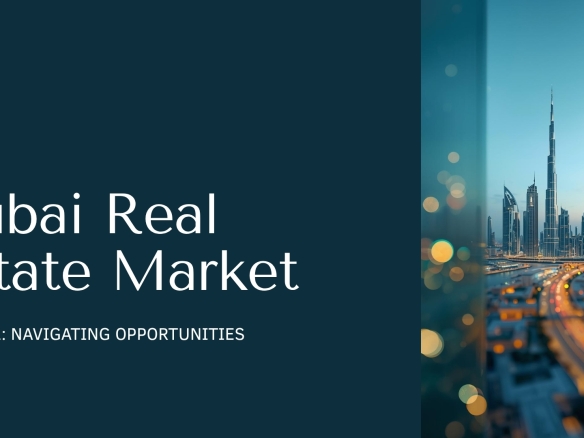Dubai’s real estate market in 2025 remains fundamentally strong, supported by genuine demand, investor confidence, and a rapidly growing population. This report offers a grounded, data-backed analysis written from the perspective of a real estate expert with over 20 years of experience and a background in finance. Rather than a speculative bubble, Dubai’s property sector shows signs of controlled, sustainable growth. Key indicators — from population trends and luxury demand to global investor behavior — affirm that fears of a market crash are not supported by current data.
Understanding Essential vs. Non-Essential Demand
In real estate, demand can be divided into two core categories:
- Essential Demand: Driven by basic housing needs (residency, relocation, population growth).
- Non-Essential Demand: Driven by lifestyle upgrades, second homes, seasonal use, and investment.
In Dubai, both types are rising rapidly.
Simple Example:
If someone moves to Dubai, they need a place to stay — this is essential demand. If they already live here but want to upgrade, invest, or buy a second home — that’s non-essential demand.
Understanding ‘Need’ vs. ‘Demand’
In two decades of market cycles, one thing is clear: true strength in real estate comes from underlying need, not superficial demand. ‘Need’ in this context means the basic human requirement for shelter, driven by job creation, population growth, and social migration. ‘Demand’, meanwhile, includes motivations beyond necessity — second homes, yield investments, or safe-haven asset placement.
Dubai is a rare global market where both these drivers operate at scale. You have people relocating from 150+ countries each year — families, professionals, and retirees seeking stability and opportunity. At the same time, you have global investors buying into the market, not for speculative flips, but for lifestyle diversification and capital preservation. This dual engine is what makes Dubai remarkably resilient.
Population Growth = Housing Need
Dubai’s population has grown from 2.1 million in 2012 to nearly 3.9 million in 2025. Assuming one home is needed for every 4 people, that means Dubai needed 500,000 new homes. Yet only 360,000 units were delivered — and many of them are studios or 1BR units not suitable for families.
Supply Gap and Housing Imbalance
Many analysts point to rising supply as a warning sign, but the data says otherwise. Between 2012 and 2025, roughly 360,000 new homes were delivered. However, not all supply is equal. A significant percentage of these units fall below the design, quality, or location standards today’s buyer expects.
Moreover, older units are cycling out of desirability. Exposure to heat, design fatigue, and shifting community infrastructure means homes built in 2005–2015 are being renovated, rebuilt, or replaced. So while the gross supply number appears adequate, the functional inventory of desirable homes — especially in Tier 1 areas — remains low.
Conclusion: Supply has not kept pace with actual housing needs. Demand is real and growing.
Market Behavior & Buyer Psychology
According to Knight Frank:
- Only 33% of buyers are looking for short-term flips.
- Most buy as end-users, second homes, or long-term rentals.
These are rational, long-term buyers — not speculative flippers. A stable, informed buyer base keeps the market resilient.
Shifting Demand: Who Is Buying in 2025?
In 2025, demand isn’t just about quantity — it’s about quality and motivation:
– End-users upgrading from older units.
– Global UHNWIs (ultra high-net-worth individuals) buying branded residences in Downtown, Palm, and Dubai Hills.
– Digital nomads acquiring second homes.
– Gulf and Indian families purchasing legacy properties.
This isn’t emotional or hype-driven buying. It’s strategic, long-term, and often cash-based — a far cry from the over-leveraged environment that preceded the 2008 crash.
New Layers of Demand Emerging
1. Holiday Homes & Airbnb
In 2024, Dubai welcomed 18.72 million tourists. Airbnb listings now have 70%+ average occupancy.
Many investors now buy property not just for yield, but to use during vacations — creating a new, growing layer of demand outside residency-based needs.
2. Luxury Segment Growth
Dubai is now the #1 city in the world for $10M+ property transactions (431 deals in 2023).
Luxury property demand continues to surge due to:
- Global affordability vs. other major cities (London, NY, Singapore)
- Liquidity in Dubai’s luxury market
- Tax benefits and quick resale potential
Result: High-net-worth investors actively choose Dubai as a secure, fast-moving luxury investment hub.
3. Second Home Demand
A large number of buyers don’t live in Dubai full-time — they simply want a vacation home. This growing group adds to non-residential demand, with 23% of future buyers targeting Dubai as a second-home destination.
Record Market Activity and Sentiment
Dubai recorded over 226,000 property transactions in 2024 — a 36% increase year-over-year — and over AED 411 billion in value. In Q1 2025 alone, AED 204 billion in deals were logged. These aren’t just high numbers; they show consistent, distributed liquidity across the residential, off-plan, and commercial segments.
Even more telling: transaction activity isn’t concentrated among a few developers or communities. It spans across Arjan, Business Bay, Dubai Hills, and newer areas like Dubai South — proof of market depth and maturity.
Market Resilience Indicators
- 226,000 property transactions in 2024 — up 36% YoY
- Property prices have risen 75% since Feb 2021
- No sustained monthly drop in prices or transactions
In a typical crash, you’d see 3–4 months of falling prices and volumes. That’s not the case here.
Conclusion: No Crash in Sight
All key fundamentals — population growth, undersupply, informed buyer behavior, luxury market expansion, and increasing global investor attention — point to continued strength in Dubai’s real estate market.
Even with price corrections, the market is not in a bubble. It is adjusting, growing, and maturing. Dubai remains a safe, attractive, and smart destination for property investment in 2025 and beyond.




Join The Discussion